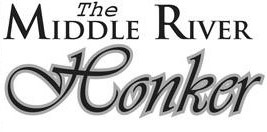Question: I was recently issued a citation and it states “tires extending beyond fenders” - I have a clarification question on the statute listed, 169.734. It states, “Every passenger automobile shall have fenders, or other devices, that are designed to prevent, as far as practicable, water, dirt, or other material being thrown up and to the rear by the wheels of the vehicle.” I’m trying to figure out what my best solution is, without having to buy four new rims and tires. My rear wheels stick out from my fender’s one inch.
The statute mentions “other devices” - What “other devices” would be an option? Would a wider/larger mud flap that covers the full width of the tire be acceptable or the Rock Tamers that hang from the hitch?
Answer: In addition to the mud flaps I would say that “fender extensions/ fares” that match how far the tires that extend outside. While talking about tires, here is some helpful information from the National Highway Traffic Safety Administration (NHTSA.)
Conduct monthly maintenance inspections, focusing on proper tire inflation pressure, treadwear and tire damage, in addition to recurring tire rotation and balancing, and alignment services.
Proper tire pressure is the most important part of maintaining your tires. It affects safety, tire durability, and your fuel consumption. Check the pressure of all tires, including your spare, at least once a month when the tires are “cold,” meaning that the car hasn’t been driven for at least three hours.
Check your tires’ tread at least once a month when you’re checking their pressure. Tires have built-in “treadwear indicators,” which are raised sections that run in between the tire’s tread. When the tread is worn down so that it’s level with the tread indicator, it’s time to replace your tires.
Tire balancing ensures your wheels rotate properly and keeps the vehicle from shaking or vibrating. Always have new tires balanced at installation.
Rotating your tires can help reduce irregular wear, which will help your tires last longer and maintain fuel efficiency. Check your owner’s manual for information on how frequently the tires on your vehicle should be rotated and the best pattern for rotation. If recommended by the vehicle manufacturer, rotate your tires every 5,000 to 8,000 miles or sooner if uneven wear appears.
To maintain tire safety, purchase replacement tires that are the same size as the vehicle’s original tires or another size recommended by the vehicle manufacturer. Check your owner’s manual or the Tire and Loading Information Label located on the driver’s side door edge or post to find the correct size for your car or truck.
You can check for tire recalls and file a tire safety complaint if you think there may be a problem with your tires at NHTSA.gov.
If you have any questions concerning traffic related laws or issues in Minnesota, send your questions to Trp. Jesse Grabow – Minnesota State Patrol at 1000 Highway 10 West, Detroit Lakes, MN 565012205. (You can follow him on Twitter @MSPPIO_NW or reach him at [email protected]

